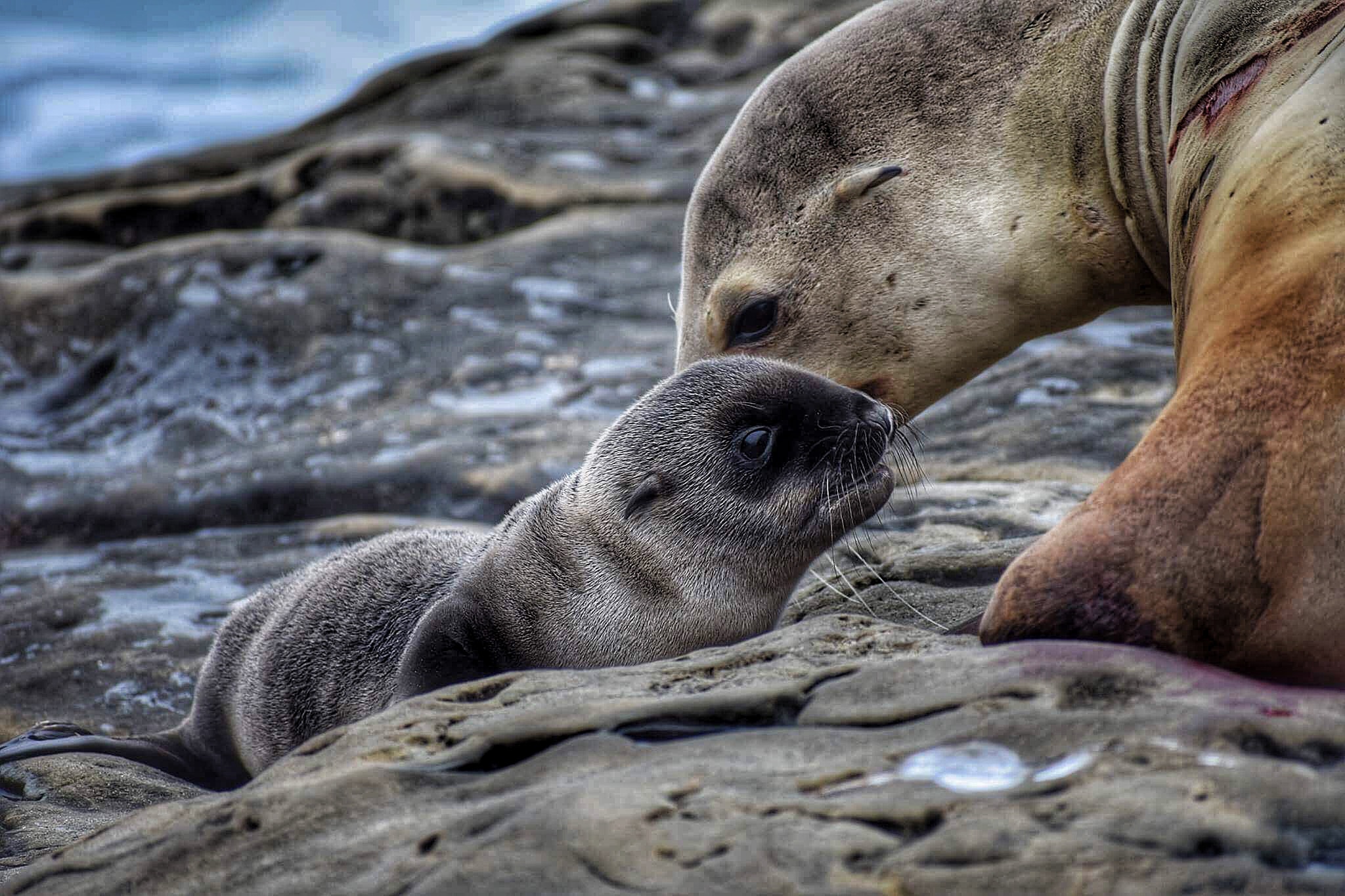
Marine Mammal Viewing in Sanctuaries

National marine sanctuaries provide countless opportunities to see marine animals in their natural environment, including marine mammals. Here are a few national marine sanctuaries known for opportunities to see marine mammals for at least part of the year:
National Marine Sanctuary of American Samoa – This sanctuary lies in the Pacific Ocean about halfway between Hawai’i and New Zealand. Its warm, tropical waters provide a habitat ideal for dolphins all year long and serve as a great breeding and feeding ground for migrating whales in the winter. Species you can see here include the huge humpback whale to smaller Fraser’s dolphins. According to the National Park of American Samoa, located near the sanctuary, September to October is the peak season and best time to see humpback whales in the sanctuary. Visitors and locals can book a spot with a local whale watching charter throughout the year, and marine mammals are sometimes visible from land. The National Park provides a list of present and possible present marine mammals here.
Channel Islands National Marine Sanctuary – Off the coast of southern California lies Channel Islands National Marine Sanctuary, protecting approximately 1,470 square miles (or 1,110 square nautical miles) of ocean waters surrounding Anacapa, Santa Cruz, Santa Rosa, San Miguel, and Santa Barbara Islands, extending from mean high tide to six nautical miles offshore around each of these five islands. This rich ecosystem, fueled by mixing ocean currents, provides habitat for seals, sea lions, and dolphins, and a migration corridor for larger marine mammals like gray and blue whales. The presence of numerous marine mammal species in the sanctuary throughout the year affords numerous opportunities to see them on a guided tour throughout the sanctuary or from Channel Islands National Park if land-based viewing is more your style.
Florida Keys National Marine Sanctuary – Protecting nearly 3,000 square nautical miles in the Florida Keys, this sanctuary is home to manatees, Atlantic bottlenose dolphins, pilot whales, and other cetacean species throughout the year. South Florida’s warm, tropical waters paired with diverse ecosystems, ranging from seagrass beds to large reef tracks, provide marine mammals with water temperatures in which they can thrive, plenty of prey, and a place to raise their calves. The presence of marine mammals and other species mean there is no shortage of opportunities to see these animals in their habitats and learn about their life histories and conservation on a trip to the Florida Keys.
Greater Farallones National Marine Sanctuary – Protecting waters from California’s central and northern coasts, Greater Farallones National Marine Sanctuary is a great place to see marine mammals — at least 36 different species to be exact. Located within the California Current ecosystem, one of four major eastern boundary currents in the world, Greater Farallones National Marine Sanctuary is part of one of the most biologically productive regions in the world. From Steller sea lions to blue whales, visitors can learn about and experience the many marine mammal species that live in and travel through the sanctuary by participating in guided tours or the sanctuary’s public programs.
Hawaiian Islands Humpback Whale National Marine Sanctuary – The name says it all! Hawaiian Islands Humpback Whale National Marine Sanctuary starts at the shorelines of Maui, Kaua’i, O’ahu and the Hawai’i Island’s Kona and Kohala coasts, and protects more than 21,000 humpback whales that migrate to Hawaiian waters every winter. Whale watching from boat and from shore is a popular activity during whale season, but dolphins and seals also call the sanctuary home all year long. During peak whale season, local and visiting volunteers assist with whale population research during the annual Ocean Count, which takes place annually on the last Saturday of January, February, and March.
Monterey Bay National Marine Sanctuary – Monterey Bay, also known as the Serengeti of the Sea, is home to an incredible and unique marine ecosystem. Present throughout the year are seals, sea lions, sea otters, dolphins, and whales, making this sanctuary an ideal visit for anyone looking to see multiple species. Visitors can experience marine mammals in Monterey Bay on a whale watching tour or from the shore. Don’t forget to visit the Sanctuary Exploration Center in Santa Cruz to learn about the sanctuary and the vast diversity of life it protects while you’re there!
Olympic Coast National Marine Sanctuary – More than 29 species of marine mammals — including otters, orcas, and elephant seals — call Olympic Coast National Marine Sanctuary and the Washington coast home, making this sanctuary a marine mammal enthusiast’s paradise! Guided tours are a popular activity during the warmer months, and you can even see whales from the shore on the famous Whale Trail! Click here for a full list of marine mammal species and the likelihood of seeing them provided by Olympic Coast National Marine Sanctuary.
Stellwagen Bank National Marine Sanctuary – Off the coast of Massachusetts is Stellwagen Bank National Marine Sanctuary, an important habitat for large whales, dolphins, and pinnipeds like gray and harbor seals. Dolphins and seals call the sanctuary home all year long, but the main attractions are the endangered North Atlantic right whales that travel north from the coast of Florida and Georgia and humpback whales that travel from the Caribbean where they spend the winter to Boston’s cooler waters during the summer where the feed and teach their calves to hunt. Named best place to see aquatic wildlife by USA Today in 2016, this sanctuary is definitely not one to miss if you love marine mammals!
